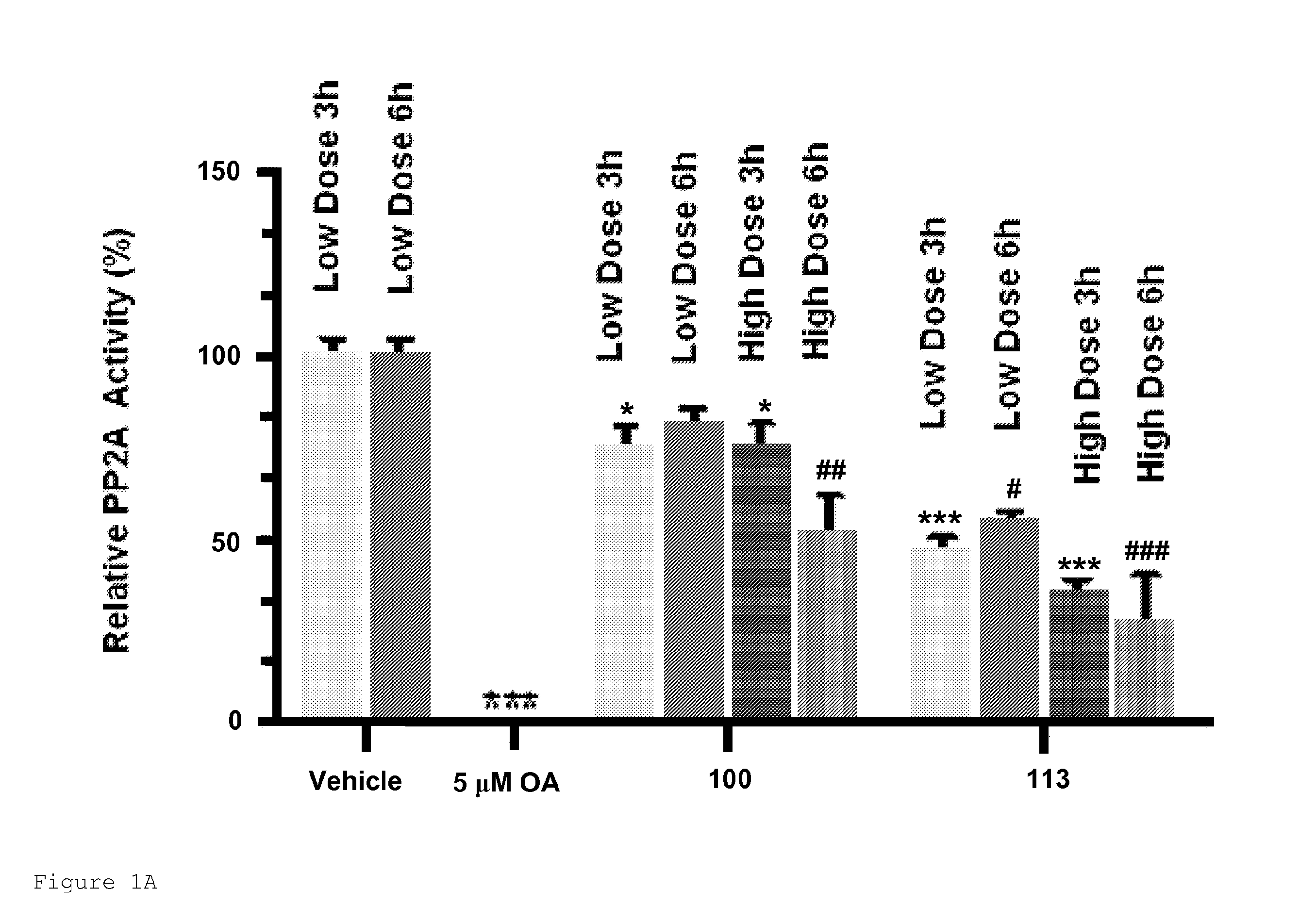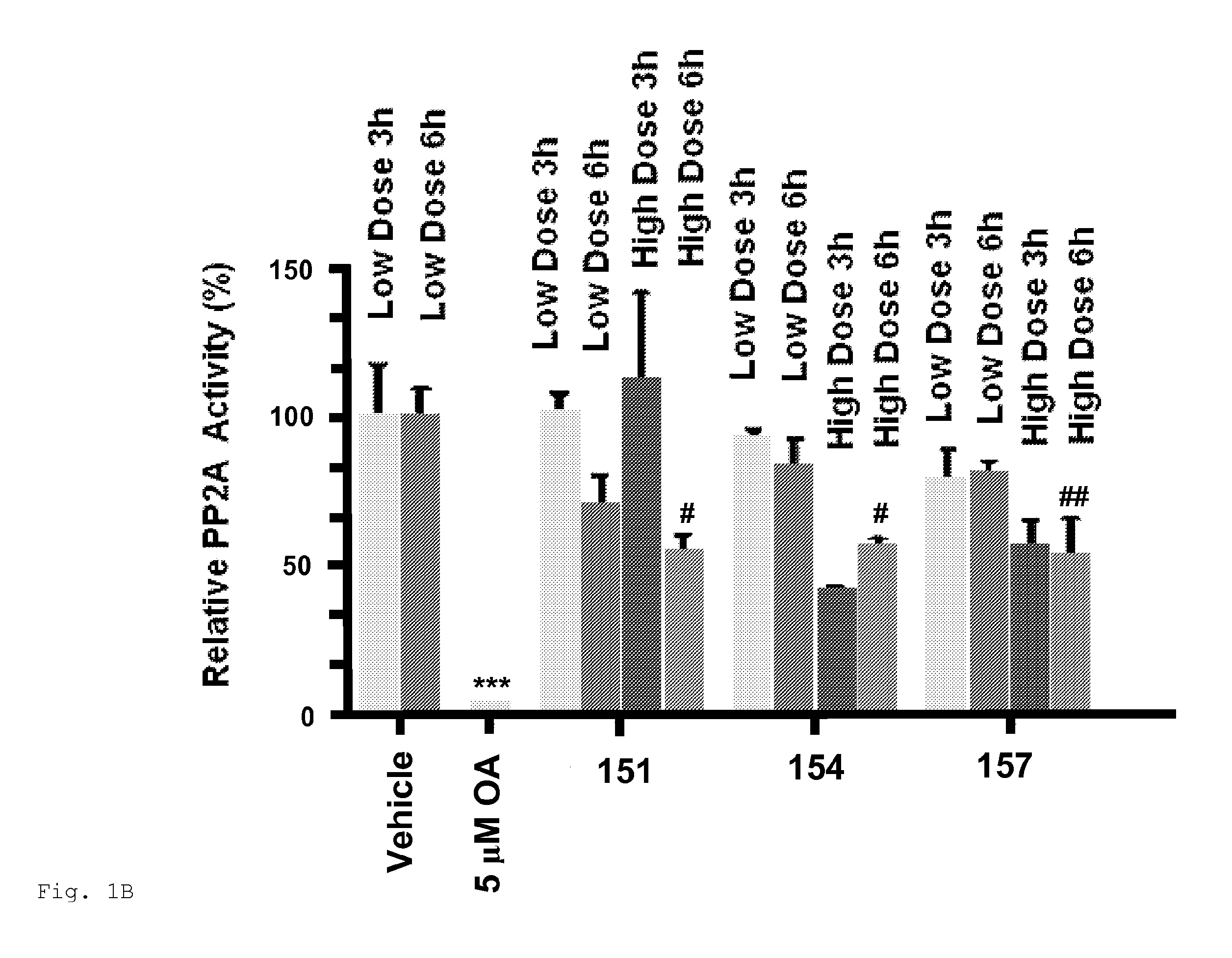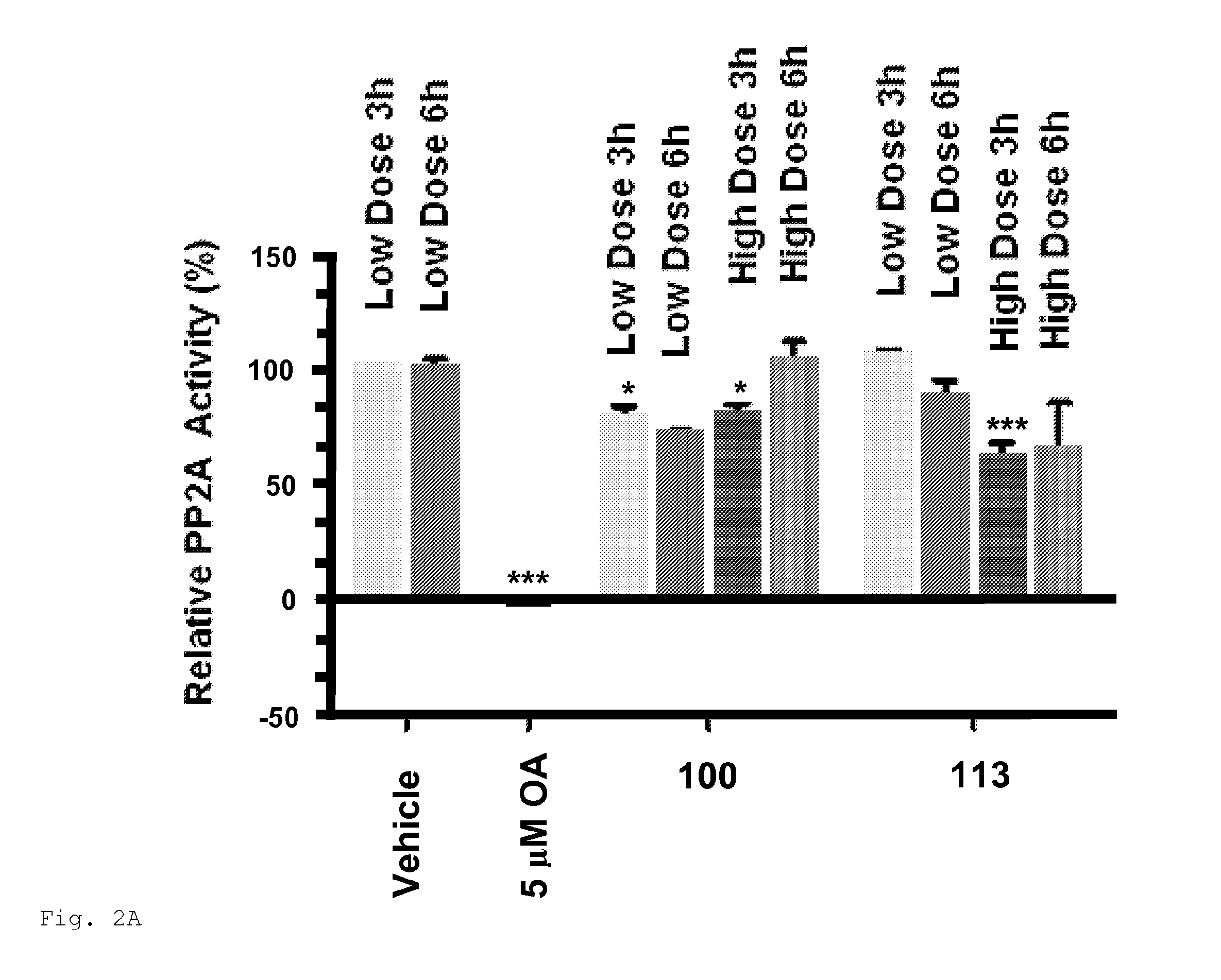Protein phosphatase inhibitors that cross the blood brain barrier
a technology of protein phosphatase inhibitors and brain barrier, which is applied in the direction of drug compositions, group 5/15 element organic compounds, sexual disorders, etc., can solve the problems of multiple trials of adjuvant chemotherapy that have not significantly improved outcomes, unwanted side effects for patients, and screening for anti-tumor or cytotoxic effects
- Summary
- Abstract
- Description
- Claims
- Application Information
AI Technical Summary
Benefits of technology
Problems solved by technology
Method used
Image
Examples
example 1
Protein Phosphatase 2A Activity in Mice Liver and Brain
[0766]Compounds 100, 113, 151, 153 and 157 were intraperitoneally administered to mice and PP2A activity was measured in the liver and brain. 153 and 157 inhibited PP2A activity in the liver and brain of mice (FIGS. 1 and 2). Both compounds at high doses significantly inhibited the activity of PP2A in livers at 6 h post treatment as compared with vehicle. 153 at high doses significantly inhibited the activity of PP2A in brains at 6 h post treatment (61% PP2A activity as compared with vehicle). Compound 157 at high doses significantly inhibited the activity of PP2A in brains at 3 h and 6 h post treatment (51% an 63% PP2A activity, respectively, as compared with vehicle). Compounds 153 and 157 inhibited PP2A activity in the brain more effectively than compound 100 at high doses at 3 h and 6 h post treatment.
example 2
Activity Against Cancer Cell Lines
[0767]Compounds 100, 153, 157, 158 and 159 were tested in WST cell viability assays. IC50 values were obtained for cytotoxicity against breast cancer (2LMP), glioblastoma (U-87) and lung cancer (A549) cells (See Table 5 and FIGS. 3-5). 153 and 154 were cytotoxic against breast cancer cells. 158 and 159 were cytotoxic against breast cancer, glioblastoma and lung cancer cells. 158 and 159 had increased cytotoxicity relative to 100.
TABLE 5Cell Viability Assays2LMP(WST-U-87 MG(WST-A549(WST-IC50(μM)20131015 / / 20131025)20131017 / / 20131024)20131028)TPT0.043 / / 0.0730.449 / / 0.4220.3091003.407 / / 6.98119.85 / / 25.2510.3315369.09 / / 61.98>100 / / >100>10015792.20 / / 96.37>100 / / >100>1001589.188 / / 12.8315.19 / / 8.2828.7431594.664 / / 4.6165.413 / / 5.0714.710
example 3
Administration of Compound 153 or 157
[0768]An amount of compound 153 or 157 is administered to a subject afflicted with brain cancer. The amount of the compound is effective to treat the subject.
[0769]An amount of compound 153 or 157 is administered to a subject afflicted with diffuse intrinsic pontine glioma. The amount of the compound is effective to treat the subject.
[0770]An amount of compound 153 or 157 is administered to a subject afflicted with glioblastoma multiforme. The amount of the compound is effective to treat the subject.
[0771]An amount of compound 153 or 157 is administered to a subject afflicted with brain cancer. The amount of the compound is effective to cross the blood brain barrier of the subject and treat the subject.
[0772]An amount of compound 153 or 157 is administered to a subject afflicted with diffuse intrinsic pontine glioma. The amount of the compound is effective to cross the blood brain barrier of the subject and treat the subject.
[0773]An amount of co...
PUM
| Property | Measurement | Unit |
|---|---|---|
| Structure | aaaaa | aaaaa |
Abstract
Description
Claims
Application Information
 Login to View More
Login to View More - R&D
- Intellectual Property
- Life Sciences
- Materials
- Tech Scout
- Unparalleled Data Quality
- Higher Quality Content
- 60% Fewer Hallucinations
Browse by: Latest US Patents, China's latest patents, Technical Efficacy Thesaurus, Application Domain, Technology Topic, Popular Technical Reports.
© 2025 PatSnap. All rights reserved.Legal|Privacy policy|Modern Slavery Act Transparency Statement|Sitemap|About US| Contact US: help@patsnap.com



